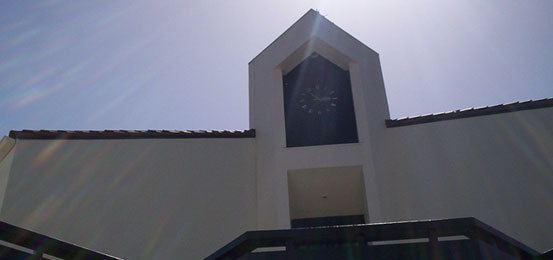Motto Fiat Lux Established 1967 Academic staff 75 Phone +1 831-459-2665 Total enrollment 1,599 (2010) | Provost Manel Camps Administrative staff 22 Undergraduate tuition and fees 380 USD (2012) Colors Blue, Gold | |
 | ||
Similar University of California, Merrill College, College Ten, Rachel Carson College, Crown College | ||
Crown College is one of the residential colleges that makes up the University of California, Santa Cruz, United States.
Contents
Despite its thematic grounding in natural science and technology, like at all UCSC colleges, Crown students major in subjects across all disciplines. Crown has a favorable reputation for academically-focused students, possibly due to both its reputation as a science college and its secluded location on the Santa Cruz campus. Because of its strong academic roots, Crown College is regarded as one of the quieter colleges on the campus. It is very close to Upper Campus, which is often frequented by hikers and mountain bikers.
Residents of the college are informally known as "Crownies."
History and campus
Crown was founded in 1967 when the Chancellor Dean E. McHenry invited biologist Kenneth V. Thimann to come to Santa Cruz and head what would become Crown College and to build the science faculty at UCSC.
Located on the upper northern side of campus by Merrill College, Crown also borders the newly constructed Colleges Nine and Ten. Crown is made up of eight three-floor residence halls as well as having about half of the Crown-Merrill apartment buildings. The UCSC fire station is located at Crown.
Because of its strong science-related roots and continuing tradition, all of the student residence buildings have science-related themes and names: Gauss House, Galen House, Rutherford House, Harvey and Maxwell Houses, Leonardo House, Galileo House, and Descartes House.
Since 2009, Crown College started the popular College game of Humans vs Zombies attracting up to one hundred students when they meet, this is also the location where the UCSC zombie defense council will be formed.
Student demographics
In the third week census of the fall of 2006, the 1,463 undergraduates affiliated with Crown included 449 new and 1,014 returning students. Their ethnic composition was 2.5% African American, 1.2% Native American, 22.8% Asian, 10.0% Latino, 4.0% Chicano, 4.4% Filipino, 45.7% Euro-American, 2.2% Other, and 7.2% Unidentified. The average gender representation during the 2005-06 academic year was 42% female and 58% male. Crown was the only college at UCSC with a predominantly male enrollment, with the whole campus having a 54% to 46% female majority.
Notable Crown fellows
Several of the fellows of Crown College have been elected to the National Academy of Sciences and the American Academy of Arts and Sciences or are otherwise notable for their academic work.
